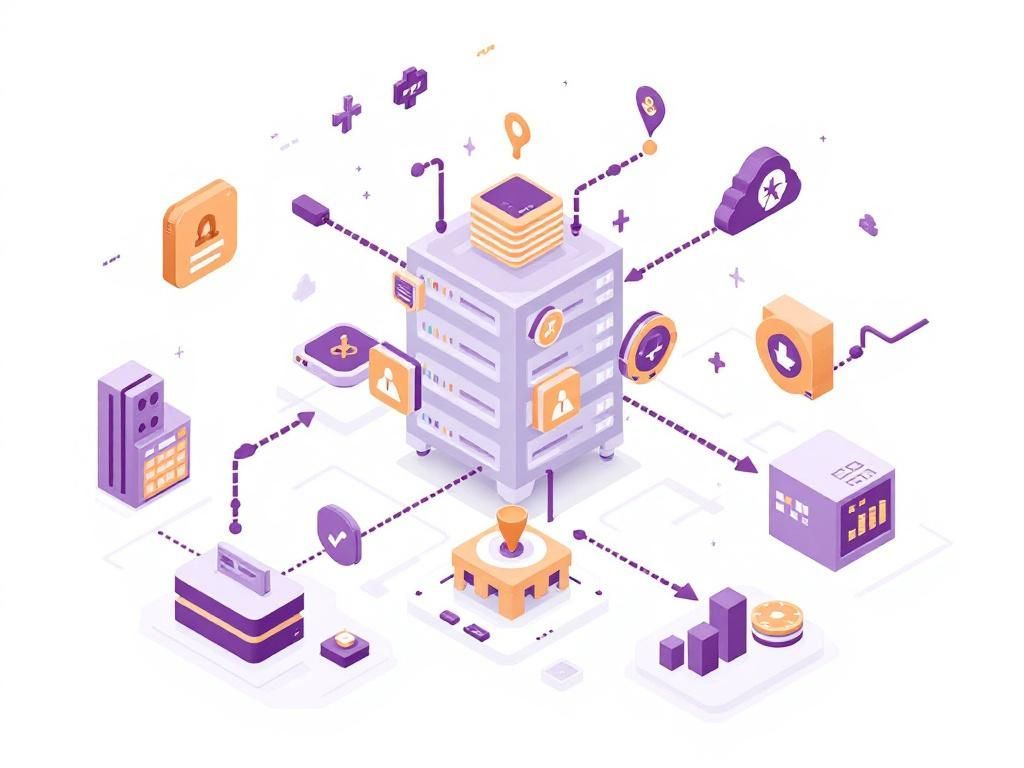Unlocking Serverless Architecture: A Developer’s Guide for 2025
Explore the future of serverless architecture for developers in 2025. Discover trends, tools, and best practices to enhance your development skills.

As we step into a new era of cloud computing, the concept of serverless architecture continues to evolve, offering developers unprecedented flexibility and efficiency. The advantages of adopting a serverless model are becoming increasingly clear, particularly for those looking to streamline their development processes and reduce operational costs. In this article, we will explore the latest advancements in serverless technologies, the best practices for implementation, and the tools that can empower developers in 2025 and beyond.
Table of Contents
What is Serverless Architecture?
Serverless architecture is a cloud-computing execution model that abstracts the underlying infrastructure, allowing developers to focus solely on writing code. Instead of managing servers and worrying about scaling, developers deploy functions or pieces of code that execute in response to events. The infrastructure automatically scales and manages the resources required to run the code, enabling quick and efficient development cycles.
Key Components of Serverless
- Function as a Service (FaaS): This is the core concept of serverless where developers write individual functions that can be triggered by events.
- Backend as a Service (BaaS): This involves using third-party services for backend functionalities such as databases, user authentication, and file storage.
- Event-Driven Architecture: Serverless applications typically operate on an event-driven model, responding to triggers like HTTP requests, database changes, or message queue events.
The Driving Forces Behind Serverless Growth
Several factors are contributing to the increased adoption of serverless architecture:
1. Cost Efficiency
With a pay-as-you-go model, developers only pay for the resources they use, leading to significant cost savings. This model eliminates the need for over-provisioning, ensuring that companies do not spend on idle resources.
2. Increased Scalability
Serverless platforms can automatically scale with demand, making it easy to handle spikes in traffic without manual intervention. This is especially beneficial for applications with variable workloads.
3. Faster Time to Market
By allowing developers to focus on writing code instead of managing infrastructure, serverless architecture facilitates quicker development cycles, enabling teams to deliver products to market faster.
4. Focus on Core Business Logic
Developers can concentrate on writing business logic rather than dealing with server maintenance, updates, and scaling issues, which can be a distraction in traditional environments.
Top Serverless Platforms to Watch in 2025
As serverless computing gains popularity, several platforms have emerged as leaders in the field. Here’s a look at some of the top serverless platforms that developers should consider:
| Platform | Provider | Key Features |
|---|---|---|
| AWS Lambda | Amazon Web Services | Integration with other AWS services, automatic scaling, and support for multiple programming languages. |
| Azure Functions | Microsoft Azure | Supports C#, Java, JavaScript, and Python; seamless integration with Azure services. |
| Google Cloud Functions | Google Cloud | Easy to use with Google services, strong event-driven capabilities, multi-language support. |
| IBM Cloud Functions | IBM Cloud | OpenWhisk-based, supports API management, and integrates with various IBM services. |
| Netlify Functions | Netlify | Ideal for front-end developers, supports serverless functions for building static sites. |
Best Practices for Implementing Serverless
To maximize the benefits of serverless architecture, developers should adhere to best practices when implementing their solutions:
1. Organize Your Functions
Keep functions small and focused. This modular approach makes them easier to manage, test, and deploy. Aim for single-responsibility functions that handle one specific task.
2. Use Environment Variables
Utilize environment variables to manage configuration settings across different environments (development, staging, production). This practice enhances security and simplifies configuration management.
3. Monitor and Optimize Performance
Implement monitoring tools to track the performance of your functions. Services like AWS CloudWatch or Google Stackdriver can help identify bottlenecks and optimize resource utilization.
4. Implement Error Handling
Design robust error handling to manage failures gracefully. Use retries, circuit breakers, and logging to ensure that your system can recover from errors effectively.
5. Manage State Wisely
Serverless functions are stateless by nature. Use external storage solutions like databases or caches (e.g., Redis) to manage state across function invocations.
The Future of Serverless: Trends to Watch
As the serverless landscape continues to evolve, several trends are likely to shape its future:
1. Multi-Cloud Solutions
Organizations are increasingly adopting multi-cloud strategies to avoid vendor lock-in and enhance resilience. Expect serverless frameworks to evolve to support seamless integration across different cloud platforms.
2. Enhanced Security Measures
With the growing adoption of serverless architecture, security concerns will become more prominent. Tools and frameworks for securing serverless applications will be crucial.
3. Integration with AI and Machine Learning
Serverless platforms are likely to integrate more closely with AI and ML services, enabling developers to build intelligent applications that leverage these technologies without the burden of infrastructure.
4. Increased Focus on Developer Experience
Tools that simplify the serverless development process will become more prevalent, with a focus on improving developer productivity and experience.
Conclusion
Embracing serverless architecture in 2025 will empower developers to create scalable, cost-effective, and efficient applications. By understanding the core concepts, leveraging leading platforms, and following best practices, developers can unlock the full potential of serverless computing. As technology advances, staying informed about emerging trends will be essential to harnessing the power of serverless architecture effectively.
FAQ
What is serverless architecture?
Serverless architecture is a cloud-computing model that allows developers to build and run applications without managing servers. It automatically scales resources based on demand and charges only for the execution time of the code.
How does serverless architecture benefit developers?
Serverless architecture benefits developers by allowing them to focus on writing code without worrying about server management, enabling faster development cycles, and reducing operational costs.
What are the best practices for implementing serverless architecture?
Best practices for implementing serverless architecture include designing for statelessness, utilizing microservices, optimizing cold starts, and implementing proper monitoring and logging.
Can serverless architecture handle high traffic?
Yes, serverless architecture is designed to automatically scale resources to handle high traffic, making it suitable for applications with variable workloads.
What tools and platforms are available for serverless development in 2025?
In 2025, popular tools and platforms for serverless development include AWS Lambda, Azure Functions, Google Cloud Functions, and various serverless frameworks like Serverless Framework and AWS SAM.
Is serverless architecture cost-effective for small projects?
Yes, serverless architecture is often cost-effective for small projects as it eliminates the need for upfront infrastructure costs and allows you to pay only for what you use.

